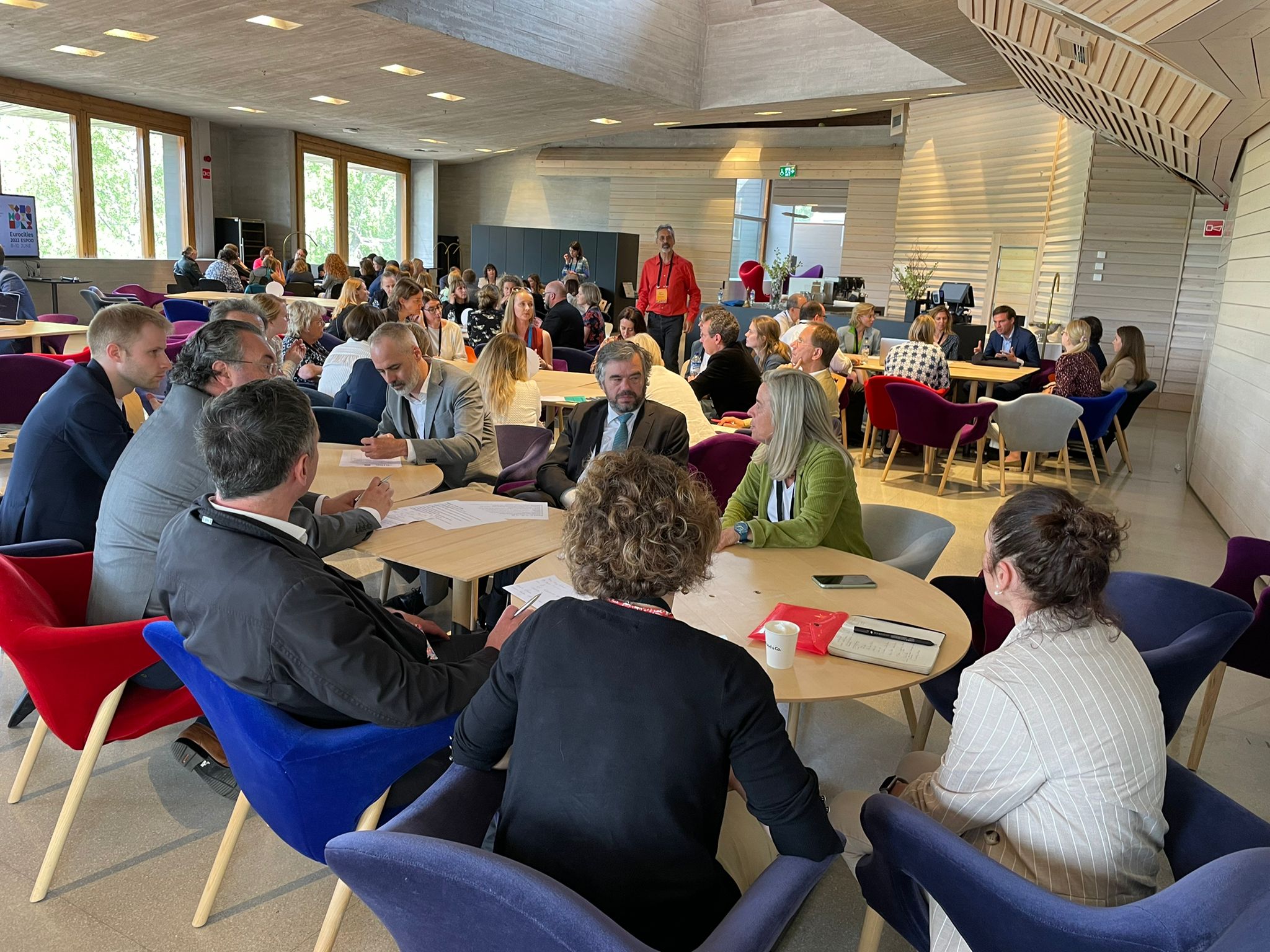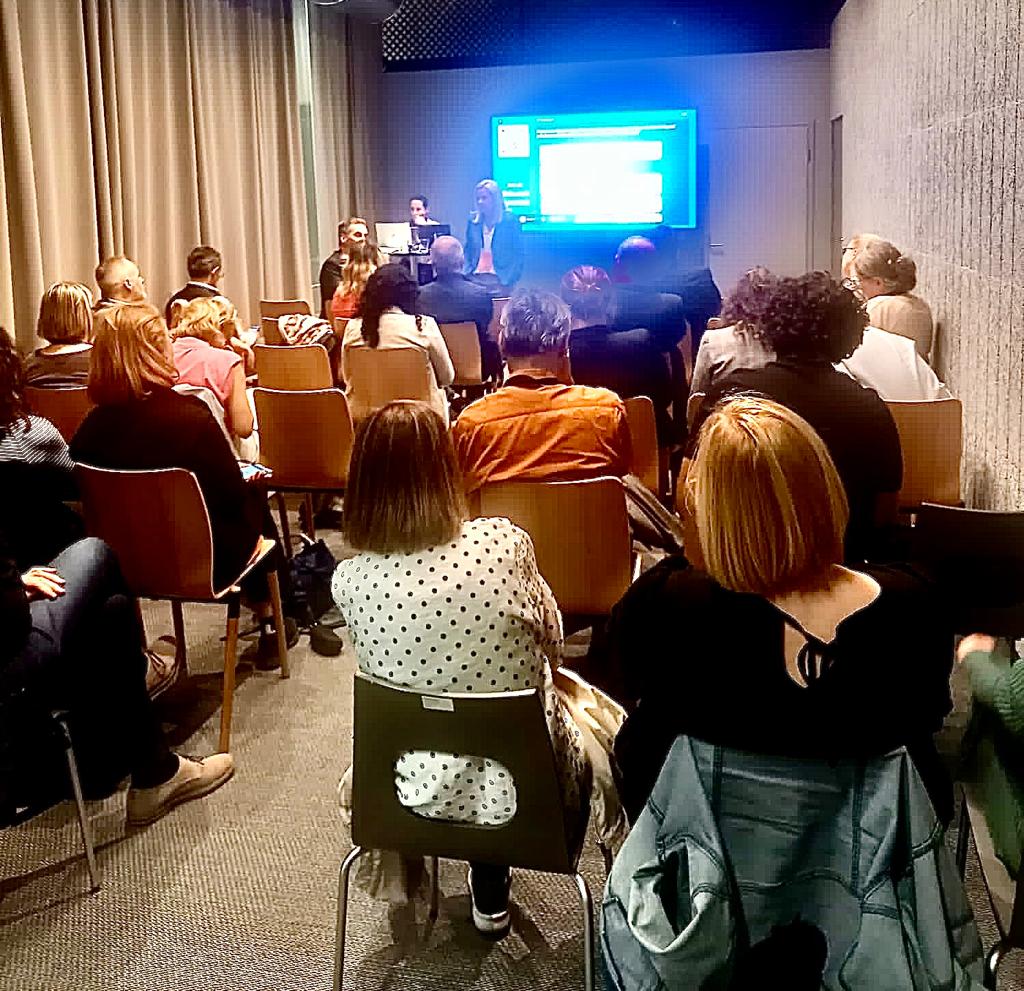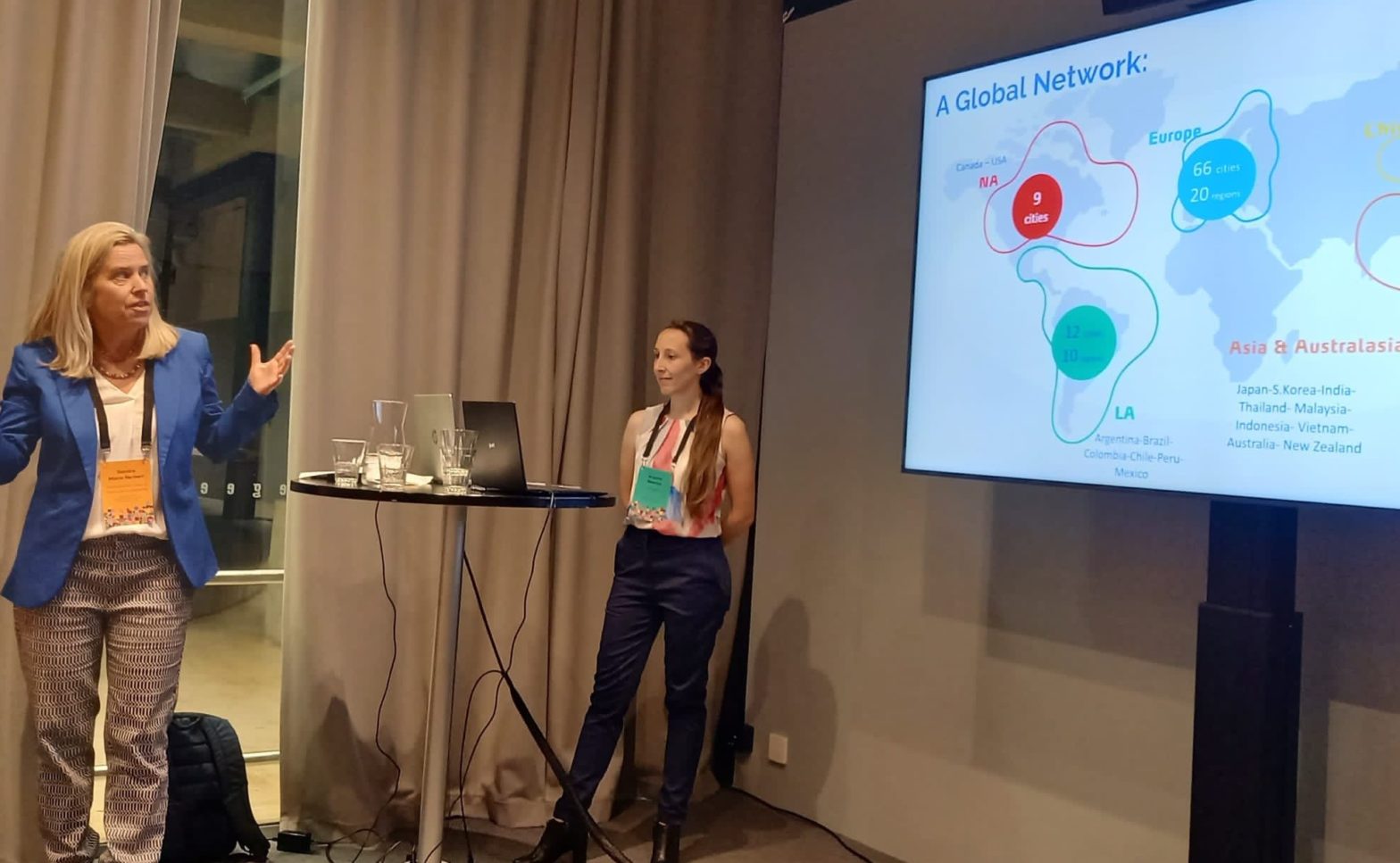34 city practitioners gathered in Espoo during the Eurocities annual conference for an IURC side event (8 June) and speed-networking session (10 June) to brainstorm on their international cooperation experience, discussing expectations, achievements, good practices to showcase, and opportunities for improvements.
The side event kicked off with a discussion on the expectations European cities have when getting involved in International Cooperation activities with cities outside of Europe. Expectations seem to be linked to the level of international experience each city has. As starting point cities might seek international visibility, new connections and networking opportunities, which might lead to building future partnerships and pursuing funding opportunities. For cities that have longstanding international cooperation ties, objectives tend to become more concrete. Cities have highlighted the importance of exchanging good practices to improve specific policies, growing awareness of societal issues and showcasing project ideas. Getting inspiration from lessons learned and insights on other ways of facing common challenges outside Europe remain a key priority, while opening new markets opportunities for their stakeholders also was identified as important (although is not a primary objective for 31% of the participants).


The group also discussed differences and similarities when it comes to international cooperation with European peers versus cooperation with cities outside of Europe. Cities have highlighted that while the objectives might be the similar, the different sizes of cities outside of Europe as well as the cultural differences can both represent a challenge for meaningful cooperation but also an advantage in terms of broadening their own perspectives and discovering unthought approaches. Different political and governance structures were also underlined as complexities that cities are faced with when cooperating with cities outside of Europe.
The side event ended with a group discussion on stakeholders involvement and the quadruple helix approach. The key takeaways from the final discussion are summarized here below and in the downloadable PDF at the end of the article:
- The involvement of stakeholders under a quadruple helix approach, which is still a challenge for the programme, can be enhanced if a pre-identified existing ecosystem is linked to the concrete action that cities are pursuing within the scope of the cooperation. Cities & regions area therefore encouraged to get involved on international urban & regional cooperation with an action that already involves an ecosystem of stakeholders.
- Engaging the private sector and justifying involving one company over another remains a challenge for the cities. Cities have highlighted that relying on third parties, such as Chambers of Commerce, to involve private sector entities can ease up the selection process.
- The type of actions that may succeed in international cooperation are those with a long-term perspective, strategically funded and with a mature level of implementation.
